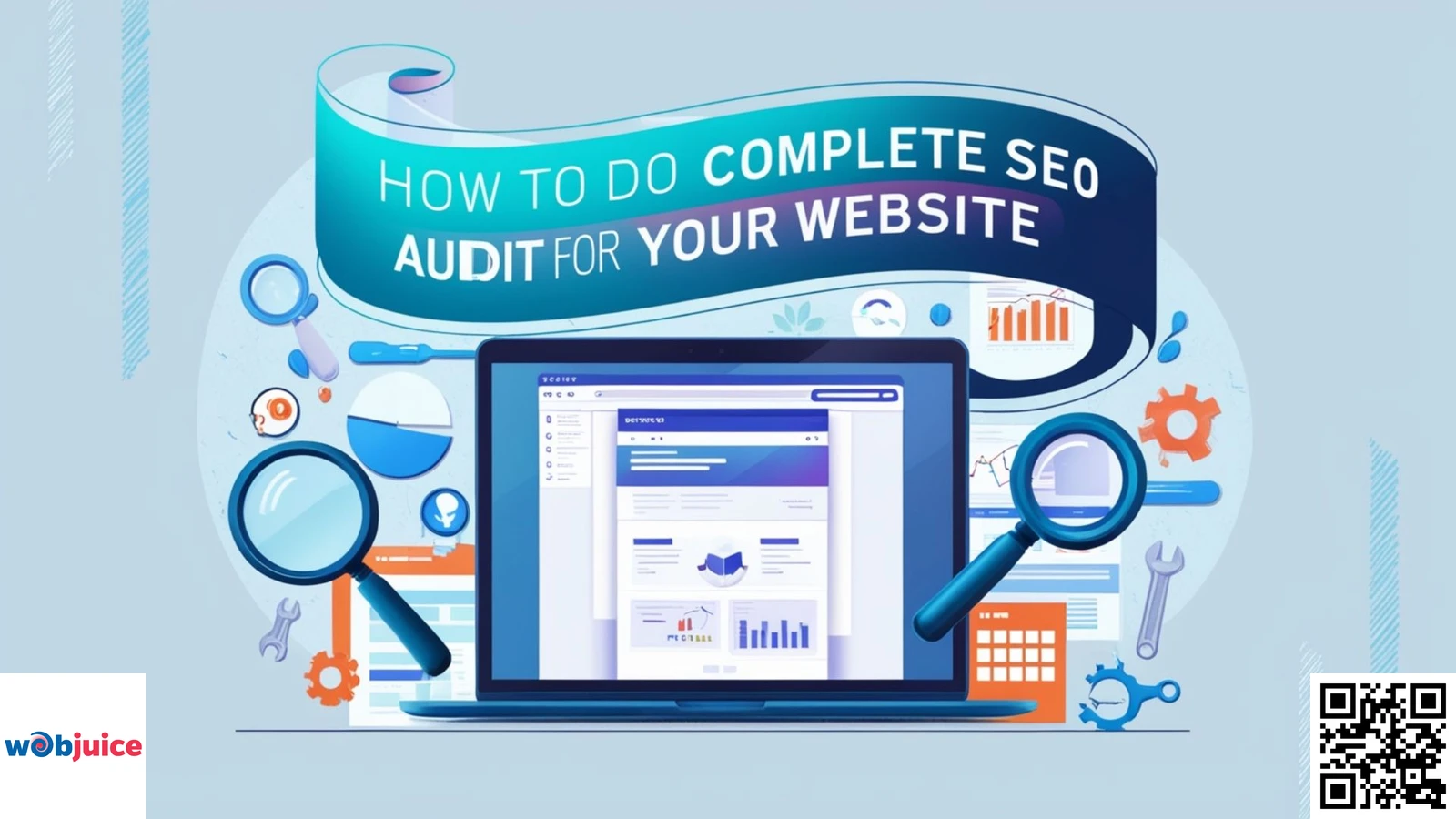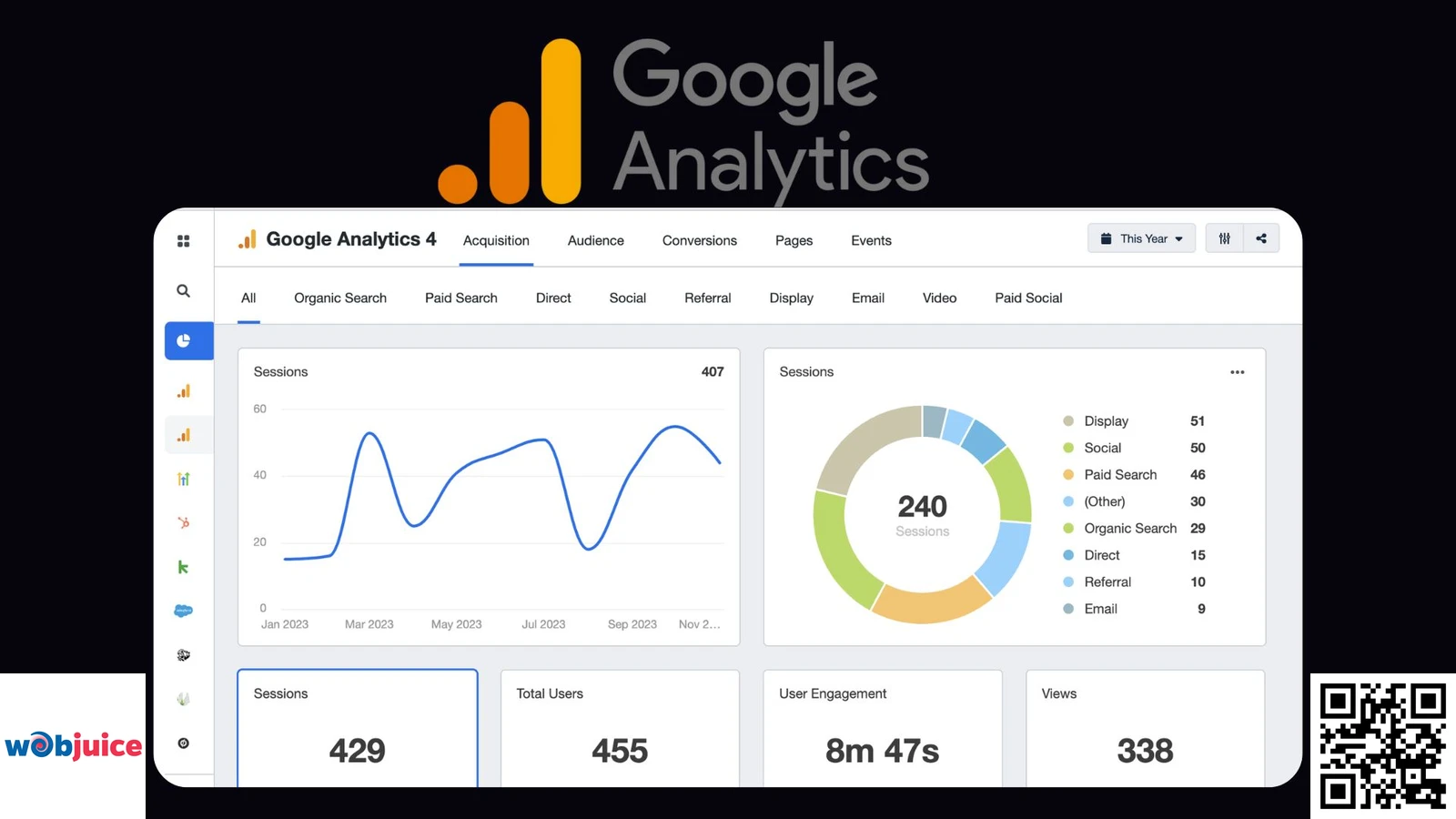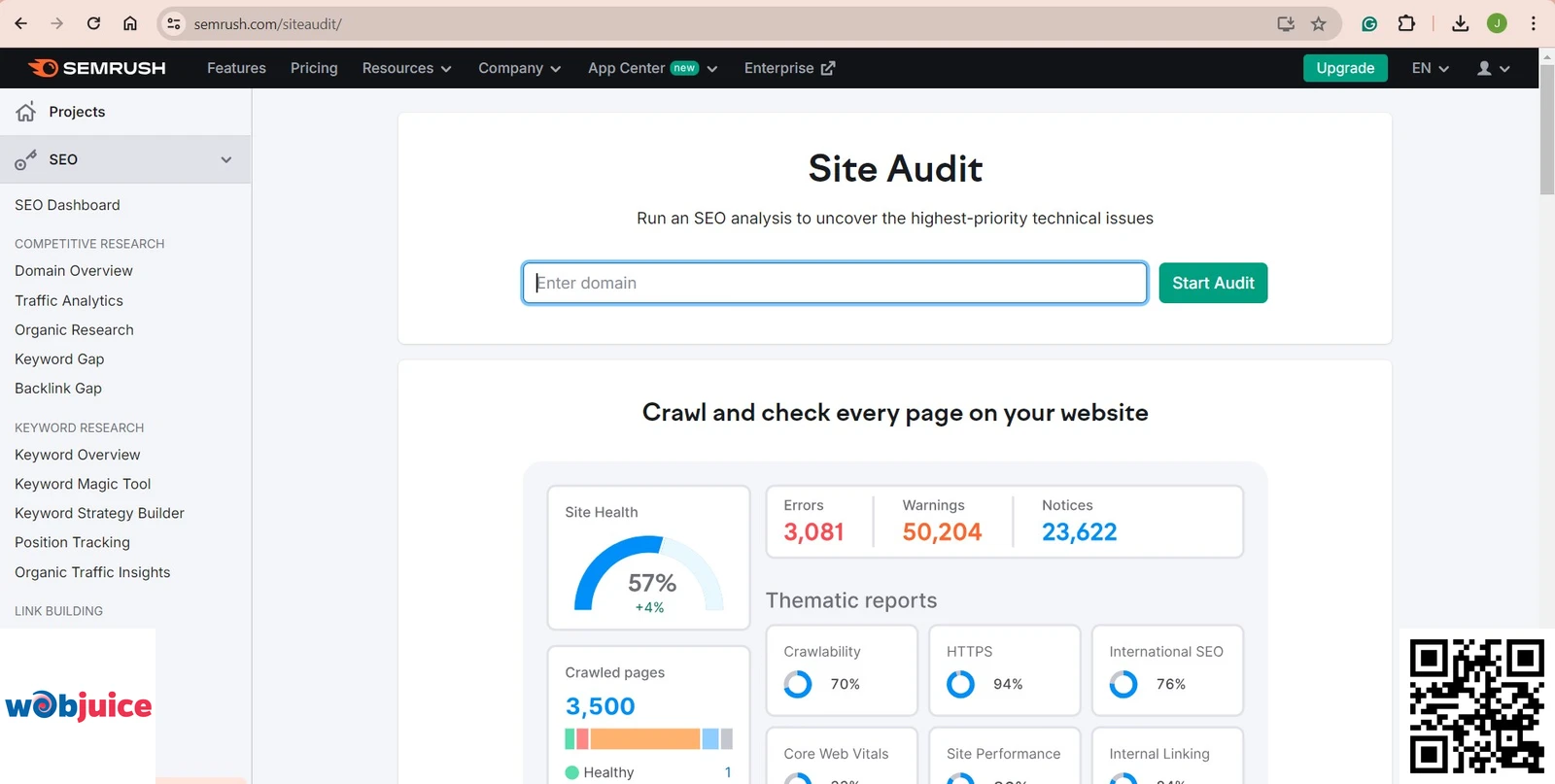A full SEO audit for your website means checking technical factors, on-page elements, and outside factors.
Start with looking closely at technical problems.
Check how fast the site is, if it works well on mobile, and how the server is set up.
Then, focus on on-page elements.
Check the quality of content, the use of keywords, and the meta descriptions .
Don’t ignore external factors.
Check the quality of your backlinks and your social media presence.
Use tools like Google Analytics and Google Search tools.
These provide detailed information on where traffic comes from and how users act.
A full SEO audit for your website includes several important steps. Begin with a technical SEO check . Look at site performance, speed, and mobile use. This helps make sure users have a good experience. Next, do an on-page SEO review. Improve content quality, title tags, meta descriptions, and URL setup. This will help boost your rankings.
Analyze off-page SEO factors too. Look at backlinks and social media presence. This helps boost brand authority and online reputation. Review the quality of the content. Make sure it is original, easy to read, and relevant to what the audience needs. Update any outdated information.
Use analytics tools like Google Analytics and SEMrush. Track the key numbers and improve your SEO plan. Base your choices on how well things work. This way, you cover all parts of a complete SEO check.
VIDEO An SEO audit is a detailed check of how your website is doing.
It helps find ways to make it better and for people to see it in search engine results.
This check looks at several parts, like content quality, how you use keywords and the experience users have.
By looking at these things, you can find ways to boost your website’s presence online.
An SEO audit checklist gives helpful tips on how to check your website’s performance.
The goal of an SEO audit is to improve your online presence, attract natural traffic, and raise sales.
It shows what is working well and what needs fixing, helping you make smart choices based on data.
During an audit, you will check on-page factors like meta tags, headings, and internal links .
Technical SEO analysis is an important step to make sure your website works well.
It looks at different factors that affect how your site performs.
This includes speed, how easy it is to use on mobile, and whether search engines can find it.
By doing a technical SEO audit , you can enhance user experience.
Start by checking how fast your website loads.
Tools such as Google PageSpeed Insights can give you helpful information.
Next, make sure your site works well on mobile devices.
Many users visit websites on their phones, so this is important for easy use and for search engine rankings.
A good structure helps search engines find and list your pages.
Check your URL structure , links within your site, and sitemap to ensure they follow best practices.
Don’t forget to look for broken links or mistakes that could hurt user experience.
Begin with the quality of your content.
Make sure it is helpful, interesting, and answers what users want to know.
Use your keywords throughout your text, especially in titles, subtitles, and tags.
Mastering on-page SEO audit is essential for improving your website’s performance and ensuring it is seen in search results.
This includes focusing on both content optimization and technical aspects.
Next, pay attention to title tags and meta descriptions.
They should be interesting and include the main keywords.
Don’t forget about image optimization .
Use descriptive file names and alt texts to help accessibility and improve SEO.
Keep an eye on your URL structure.
Simple and clear URLs that match your content help build trust with users and improve your visibility in searches.
Internal linking is important too.
It keeps visitors on your site for longer.
Start by looking at your backlinks.
Good backlinks from trusted sites help your site appear more credible.
Use tools like Ahrefs or SEMrush to check how many backlinks you have and how good they are.
Conducting a complete off-page SEO review is very important for your website.
It gives helpful ideas for making things better.
Next, look at your social media presence.
Check how people engage with your profiles.
Look for ways to strengthen audience connections.
Keep an eye on brand reviews and mentions on different platforms.
Respond to both good and bad feedback.
Lastly, look at your competitors’ tactics outside their websites.
Knowing how they build authority can show good techniques that you can use.
Start by making sure your content matches what your audience wants and cares about.
Good content should be helpful, interesting, and clear.
Offer real value in your articles, blog posts, and other materials.
Answer common questions or give solutions to problems.
Make sure your content is original to avoid repeat text.
Copying or reused material will not connect with your audience or search engines.
Pay attention to how easy it is to read.
Use simple words, short paragraphs, and headings to improve user experience.
Look closely at your content.
Use visuals like images and infographics.
Update older content.
Refresh old posts with new information and helpful keywords to improve your site’s authority.
Analytics and reporting give key information about how users act and how well content works.
By checking traffic sources, you can identify which channels attract the most visitors.
Understanding your analytics data is very important.
It helps with your SEO plan and lets you adjust to what users need.
By paying attention to the right numbers, you can make your website better for both visibility and user experience.
This leads to higher rankings and more organic traffic.
KPIs like organic traffic, bounce rates, and average session length, give a clear view of how visitors are engaging.
Google Analytics helps you track these metrics easily and in real time.
By reviewing these metrics often, you can make smart changes to your content and marketing plans.
Think about keeping track of data over time to see trends and patterns.
Good tracking of data makes the website easier to find and boosts user experience.
It brings in better traffic and raises chances for more conversions.
Google Analytics is a helpful tool for looking at where traffic comes from.
You should check numbers like bounce rates, session length, and how many visitors complete actions.
A high bounce rate from organic search might mean your content isn’t satisfying what users want.
Analyzing where your traffic comes from helps you use your budget effectively.
If social media brings in a lot of visitors but has a low rate of turning those visits into sales, you should rethink your plan.
Instead, pay more attention to channels that bring better results.
A careful check of where your traffic comes from boosts your SEO work.
By finding out which channels bring in the most visitors and which ones need help, you can improve your whole digital marketing plan.
Google Analytics, Google Search Console, SEMrush, and Ahrefs are key tools for SEO audits.
They watch how well a website is doing and give helpful insights.
Google Analytics gives detailed information about how users act, where the traffic comes from, and how well pages convert.
Google Search Console checks how your site shows up in search results.
It gives important details about search queries, clicks, and impressions.
SEMrush and Ahrefs look at backlinks, keyword rankings, and how competitors are doing.
They give a complete picture of SEO online.
Using these reporting tools in audits helps you understand how well your website is doing.
To do a full SEO audit in Dublin for your website, look at technical parts, on-page details, and off-page elements.
Start by checking your site’s layout, loading speed, and how it works on mobile.
Next, look at the quality of your content, how you use keywords, and your meta tags.
After that, check your backlinks and social media activity.
Use tools to collect data about your site’s performance.
Watch for issues like broken links, duplicate content , or missing alt text.
See if your site is indexed in search engines.
Look into what your competitors are doing and find gaps you can use.
Focus on content that grabs users’ interest and meets their needs.
Keep track of your progress often and change your plans if needed.











